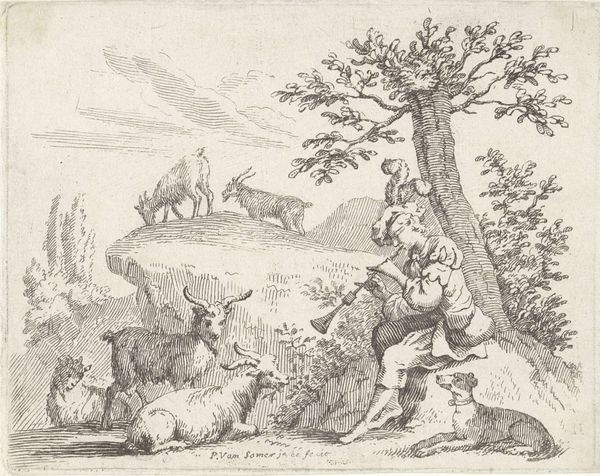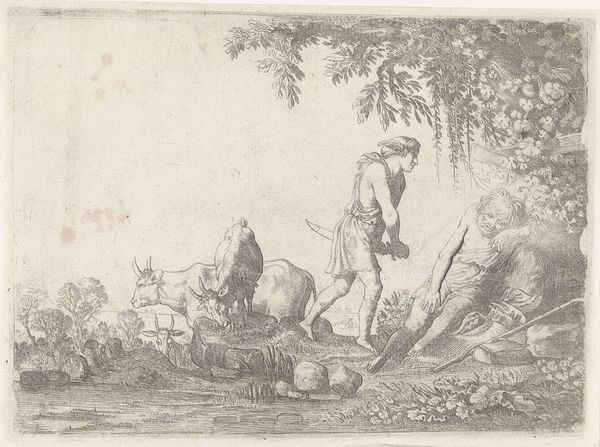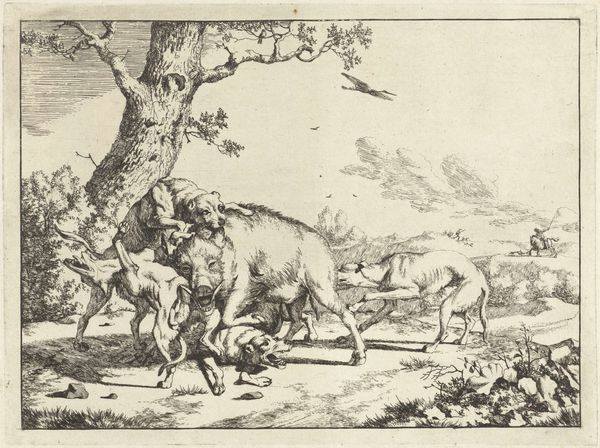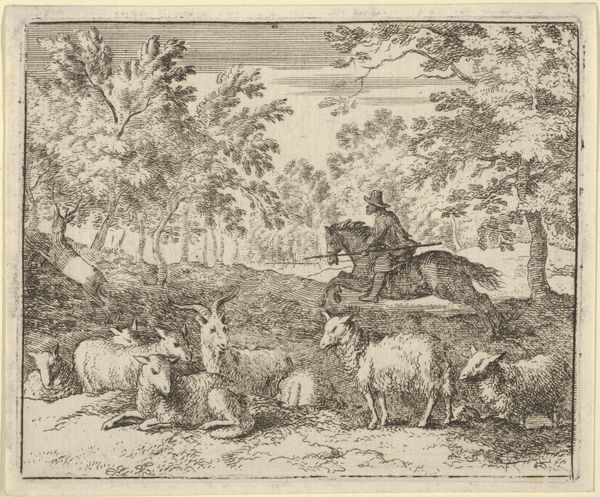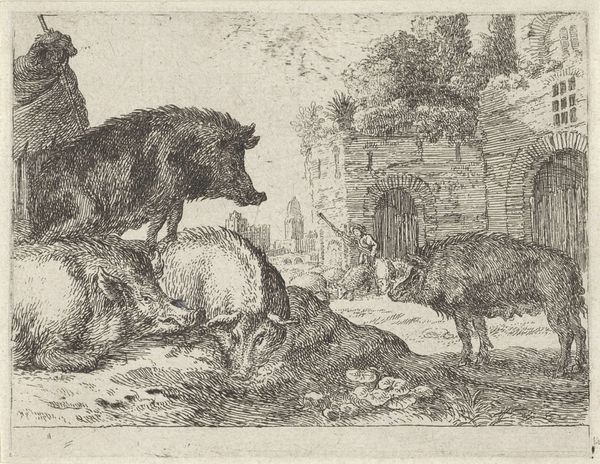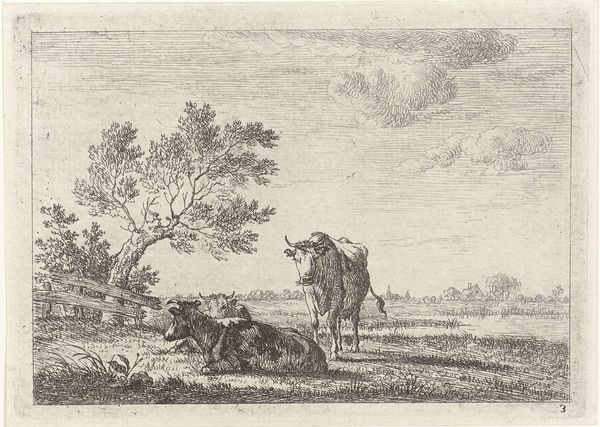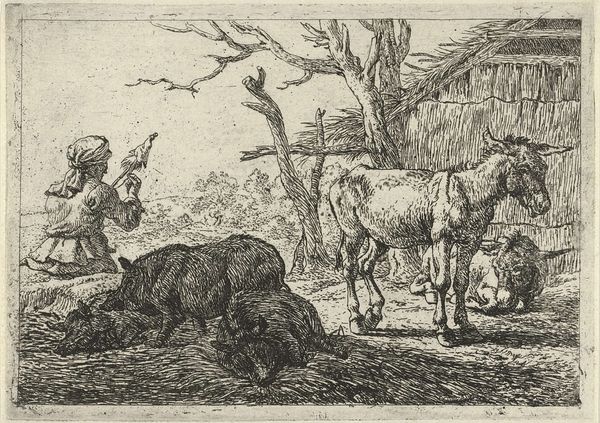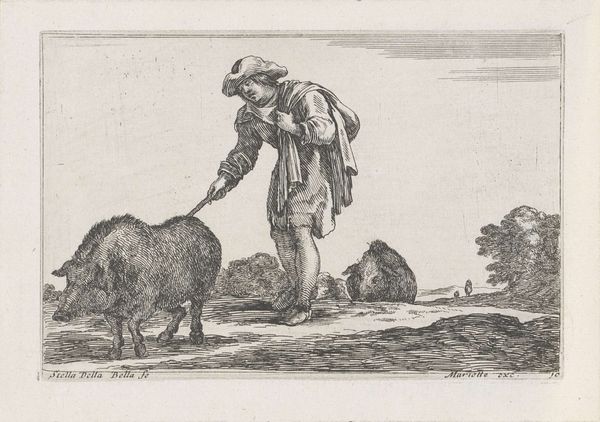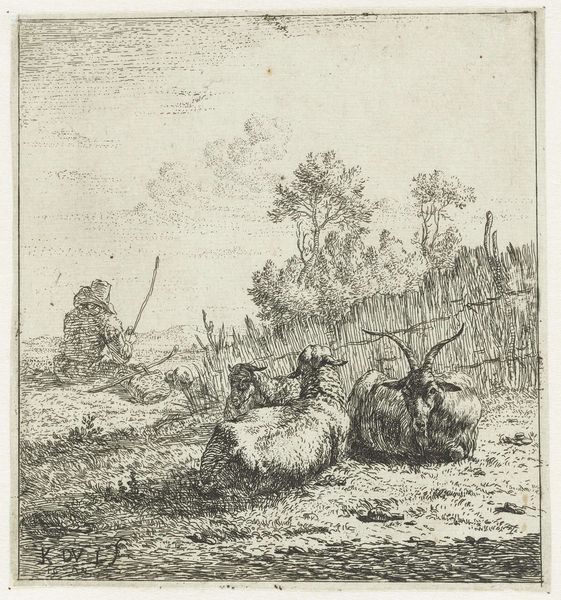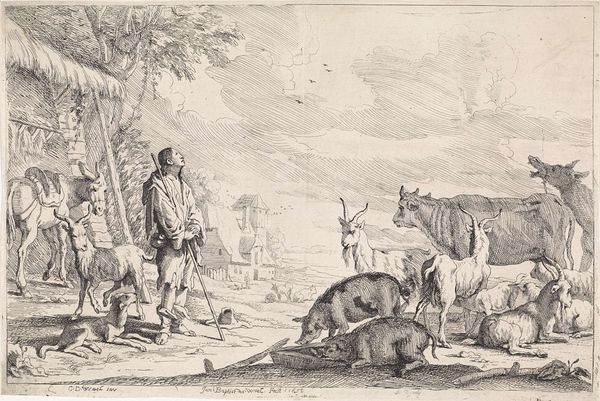
drawing, etching, paper
#
portrait
#
drawing
#
baroque
#
pen sketch
#
etching
#
pencil sketch
#
dog
#
landscape
#
paper
#
genre-painting
#
realism
Dimensions: height 101 mm, width 132 mm
Copyright: Rijks Museum: Open Domain
Editor: So, this is *Herder met zijn kudde*, or "Shepherd with his Flock," by Paul van Somer II, created somewhere between 1670 and 1697. It's an etching on paper. It’s so delicately rendered; almost dreamlike, the way the shepherd seems lost in thought, leaning on his staff. What do you see in this piece? Curator: The immediate resonance I get is the pastoral ideal, that romanticized view of rural life. But beneath the surface, notice how the shepherd's posture is not one of contentment, but almost melancholic? Consider what the dog means here, attentively watching the sheep – is he a protector or a representation of constant watchfulness? And the staff he leans on, is it support, a tool, or even a phallic symbol? These familiar forms have layers and a sustained emotional relevance over centuries. Editor: Melancholic is a great word for it. It's interesting that even within this idealised scene, there’s a hint of something deeper. So, the dog, the staff – they are visual cues, hinting at perhaps hidden emotional depths within something so seemingly simple. Curator: Precisely. Consider the enduring symbolic weight of the shepherd. Across cultures and religions, they signify guidance, protection, a watchful presence. The flock represents community, belonging, but also dependency. The image taps into very primal associations of care, responsibility, and perhaps even vulnerability. Editor: I hadn't considered the shepherd figure that broadly, outside of just face value. That broader lens, considering the collective cultural meaning attached to even commonplace figures like a shepherd and his dog really does transform the whole piece. Curator: It's like visual poetry, where familiar imagery echoes across time. Paying attention to their consistent yet evolving relevance allows for a fuller appreciation of both their emotional and historical relevance. Editor: Definitely given me something new to consider. I'll be paying a lot more attention to the language of the symbols, not just the subject itself.
Comments
No comments
Be the first to comment and join the conversation on the ultimate creative platform.
